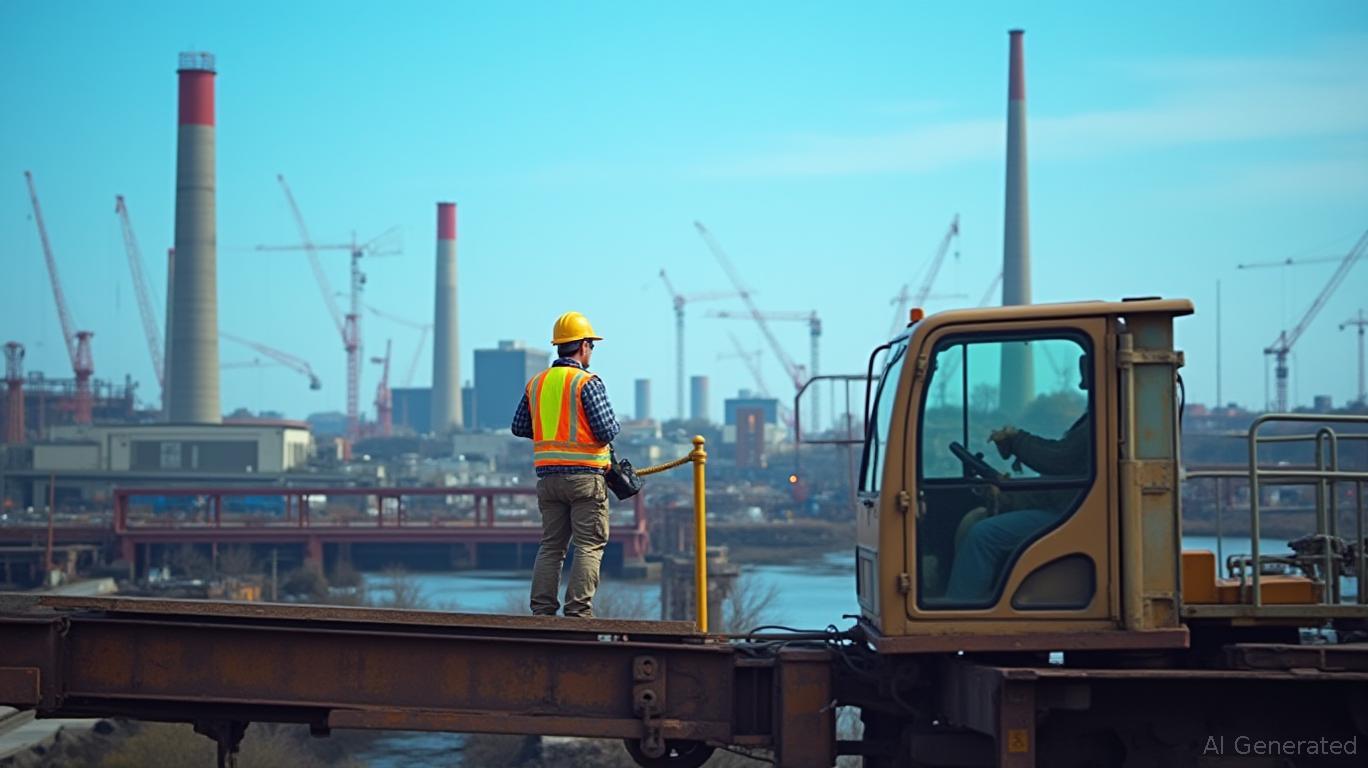Canada's Steel Sector & U.S. Tariffs: Navigating Infrastructure Growth and Diversification Plays
The U.S. imposition of 25% tariffs on Canadian steel imports in March 2025, coupled with threats of additional duties under the International Emergency Economic Powers Act (IEEPA), has reshaped North American trade dynamics. While the tariffs have disrupted supply chains and raised costs for Canadian producers, they have also spurred a strategic response from the Canadian government: accelerating infrastructure spending and diversifying trade partnerships. This creates a unique investment landscape, particularly for firms positioned to capitalize on domestic infrastructure projects and sectors driving economic resilience.
The Tariff Landscape and Canadian Countermeasures
The U.S. tariffs, initially targeting national security concerns, risked a 50% combined duty burden on Canadian steel if IEEPA measures were fully implemented. In response, Canada's Prime Minister Mark Carney announced retaliatory tariffs on $155 billion of U.S. goods, including agricultural products and machinery, while fast-tracking nation-building projects like pipelines, nuclear reactors, and cross-border trade corridors. The goal is to boost domestic steel demand, reduce reliance on U.S. markets, and strengthen Canada's G7 economic standing.

Investment Opportunities in Infrastructure Plays
The Canadian government's infrastructure blitz presents a clear entry point for investors. Key sectors include:
Construction and Engineering Firms
Companies like SNC-Lavalin (SNC.TO) and Stantec (STN.TO) are well-positioned to secure contracts for projects such as the Trans Mountain Pipeline expansion, nuclear energy facilities, and smart transportation networks. These firms benefit from government guarantees and accelerated permitting processes under Carney's reforms.
Steel and Materials Producers
Canadian steelmakers like ArcelorMittal Dofasco (part of MT.AS) and Stelco (part of Nucor NUE) stand to gain as the government mandates the use of domestic steel in infrastructure projects. While U.S. tariffs reduce cross-border exports, increased domestic demand could offset losses. Investors should prioritize firms with cost-efficient operations and exposure to non-U.S. markets.Renewable Energy and Tech Sectors
Diversification beyond traditional industries is critical. Canada's hydroelectric and wind energy sectors (e.g., Brookfield Renewable (BEPC)) are poised to benefit from global decarbonization trends, while tech firms like Loblaw Digital (part of Loblaws LDC.A.TO) and Shopify (SHOP) drive innovation in trade logistics and e-commerce, reducing reliance on U.S. supply chains.
Tactical Advantages Amid Volatility
The short-term uncertainty from tariff disputes creates opportunities for contrarian investors. Steel stocks like Stelco and Dofasco have faced downward pressure but could rebound if Canadian infrastructure spending offsets U.S. demand losses. Meanwhile, the materials sector's valuation multiples are at decade lows, offering a margin of safety.
Long-Term Resilience Strategies
Investors should focus on firms with:
- Geographic diversification: Access to markets like the EU, China, and Mexico.
- Diversified revenue streams: Companies like Bombardier (BBD.B.TO), which balance rail, aerospace, and tech projects.
- Government partnerships: Firms with guaranteed contracts or subsidies for critical infrastructure.
Risks to Consider
- Legal battles: U.S.-Canada tariff disputes could prolong uncertainty, impacting earnings forecasts.
- Commodity price fluctuations: Steel demand is tied to global economic health.
- Environmental hurdles: Projects like pipelines may face delays from indigenous land rights disputes.
Conclusion: A Strategic Pivot for Resilience
The U.S. tariffs have forced Canada to accelerate its shift toward self-reliance and diversification. Investors who align with infrastructure spenders, domestic steel producers, and high-growth sectors like renewables and tech can capture both short-term volatility-driven opportunities and long-term structural shifts. As Carney's government turns adversity into a catalyst for economic transformation, the path forward favors those willing to invest in Canada's next era of growth.
Recommendation: Overweight Canadian infrastructure and materials stocks, with a preference for firms demonstrating geographic and sectoral diversification. Monitor SNC-Lavalin and Stantec for infrastructure wins, and pair with defensive plays in renewables like Brookfield Renewable for balance.*

Comments
No comments yet